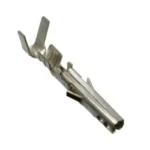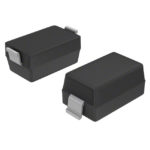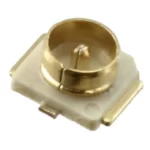Digital Integrated Circuits Are Microprocessors
Introducing The Digital Integrated Circuits
Digital integrated circuits (ICs) are the most common type of microprocessor. A digital IC is a small chip with millions of transistors on it. The transistors act as switches that can be turned on or off. They work together to perform logic operations such as AND, OR, and NOT. A digital IC has three main sections:
Instruction Decoder
An instruction decoder is a circuit that takes the binary code stored in memory and converts it into a series of electrical pulses so the correct instructions can be read by other parts of the CPU.
Registers
A register is a small memory area within a CPU that holds data temporarily while it’s being processed or used by another part of the CPU. Registers are usually very fast because they’re directly connected to the rest of the processor via wires inside the chip itself. This means they can be accessed almost instantly without involving any external devices like RAM or ROM chips which take longer to access because they’re outside the chip itself.
Control Unit
The control unit is responsible for keeping track of all instructions being executed by other parts of the CPU at any given time and making sure everything happens in order.
Putting Digital Integrated Circuits To Work For You
Digital integrated circuits are made up of transistors and resistors that work together to perform certain functions. They can be programmed to do different things by changing their configurations, which makes them incredibly versatile.
One of the most common uses for digital integrated circuits is in computers, where they’re used as microprocessors to interpret instructions from software programs and carry out actions based on those instructions.
Digital integrated circuits are also used in other electronic devices like calculators, TVs, and radios. They can be found inside anything that needs a processor — from smartphones to microwaves.
What Are Digital Integrated Circuits Used For?
Digital integrated circuits are used for two main purposes: processing and memory. Digital integrated circuits are the building blocks of all computing devices, including personal computers and servers. These chips do the work of turning information into binary code that computers can understand. They also store this information so that it can be accessed later when needed.
Digital integrated circuits are used in a wide range of applications. They are commonly used in computers, mobile phones, and other devices that use microprocessors to perform calculations and store data. The first digital integrated circuits were created in the 1950s, but they did not become widely available until the 1970s.
Digital integrated circuits are made up of transistors, resistors, and capacitors. The transistors allow current to pass from one part of the circuit to another and the resistors limit how much current can flow through a specific point on the circuit. The capacitors store electrical energy for later use by allowing it to build up inside them when voltage is applied.
Digital integrated circuits are also used to make other types of digital electronic devices such as televisions, DVD players, and video game consoles. These semiconductor chips allow these devices to process images and sound so that they can be viewed on these screens or heard through speakers.
The Many Advantages Of Digital Integrated Circuits
Digital integrated circuits are microprocessors. They can be used for many different applications, including controlling industrial equipment, medical devices, and even everyday appliances such as televisions and mobile phones. Digital integrated circuits may also be referred to as digital logic circuits or digital ICs.
There are many advantages to using digital integrated circuits in place of analog circuitry. Here is a look at some of them:
1) Speed:
Analog systems operate at much slower speeds than digital circuit systems do. This is because the information must first be converted from analog to digital before it can be processed by the computer system. The speed advantage alone makes digital ICs worth using over analog components in most cases.
2) Accuracy:
Analog systems have no way of guaranteeing accuracy because there are no specific codes that indicate what value they represent (this is why we use decimals when measuring distance). Digital integrated circuit design systems on the other hand use binary code which means they can express exact values with ease. This makes them very accurate and reliable compared to their analog counterparts.
3) Ease Of Use:
Digital circuitry makes it easy to add new features without having to modify existing parts of the design. If a new function is needed then simply add another component. This is in stark contrast to analog circuits where the extensive redesign is often required when adding new features or changing existing ones.
The Future of Digital Integrated Circuits
Most people today are familiar with digital integrated circuits, or chips. These are small computer processors that are used in everything from cell phones to automobiles. There are many different types of chips available today, and they can be used for a variety of purposes. The most common use of these chips is in computing devices.
The future of Digital Integrated Circuits looks bright thanks to advances in quantum computing and nanotechnology as well as developments in quantum mechanics and artificial intelligence (AI). In fact, some experts predict that digital integrated circuits will soon evolve into quantum computers or even quantum chips!
Conclusion
Digital Integrated Circuits (ICs) are very small units, but they contain the most advanced technologies. They have multiple layers of structures and can perform a wide variety of operations. An IC is a computer on a single chip, but it has a limited amount of storage, while a computer has large amounts of registers and memory.
Well, that’s it for this blog, hopefully, you have a better understanding of Digital Integrated Circuits. If you have any further questions about digital integrated circuits or anything else, please feel free to contact Bomzon, and we will get back to you as soon as possible.


